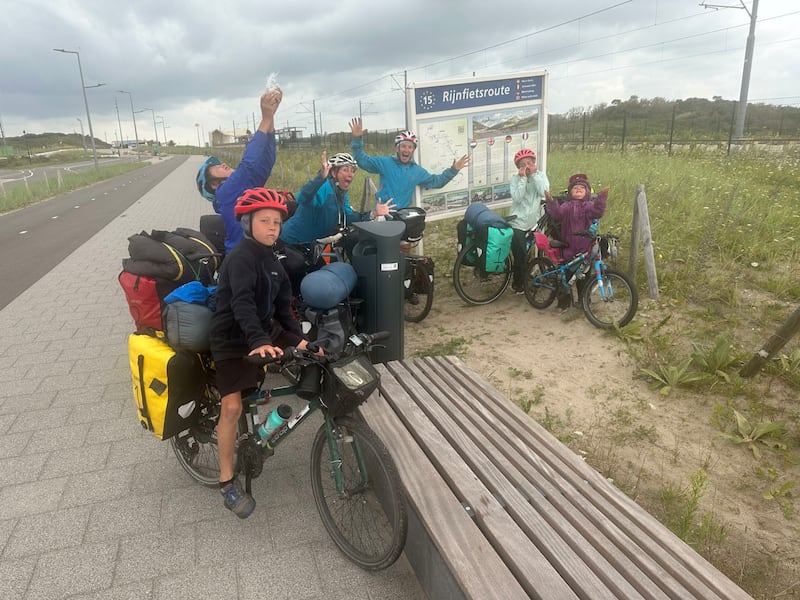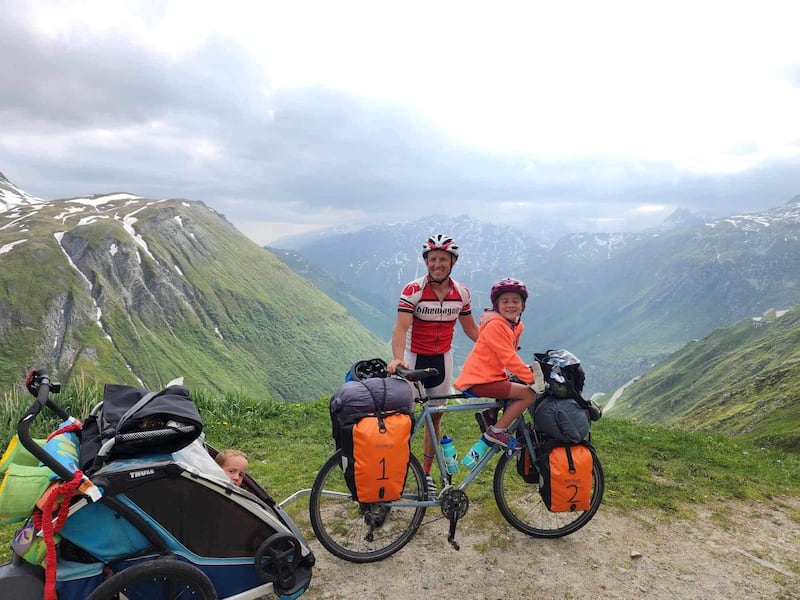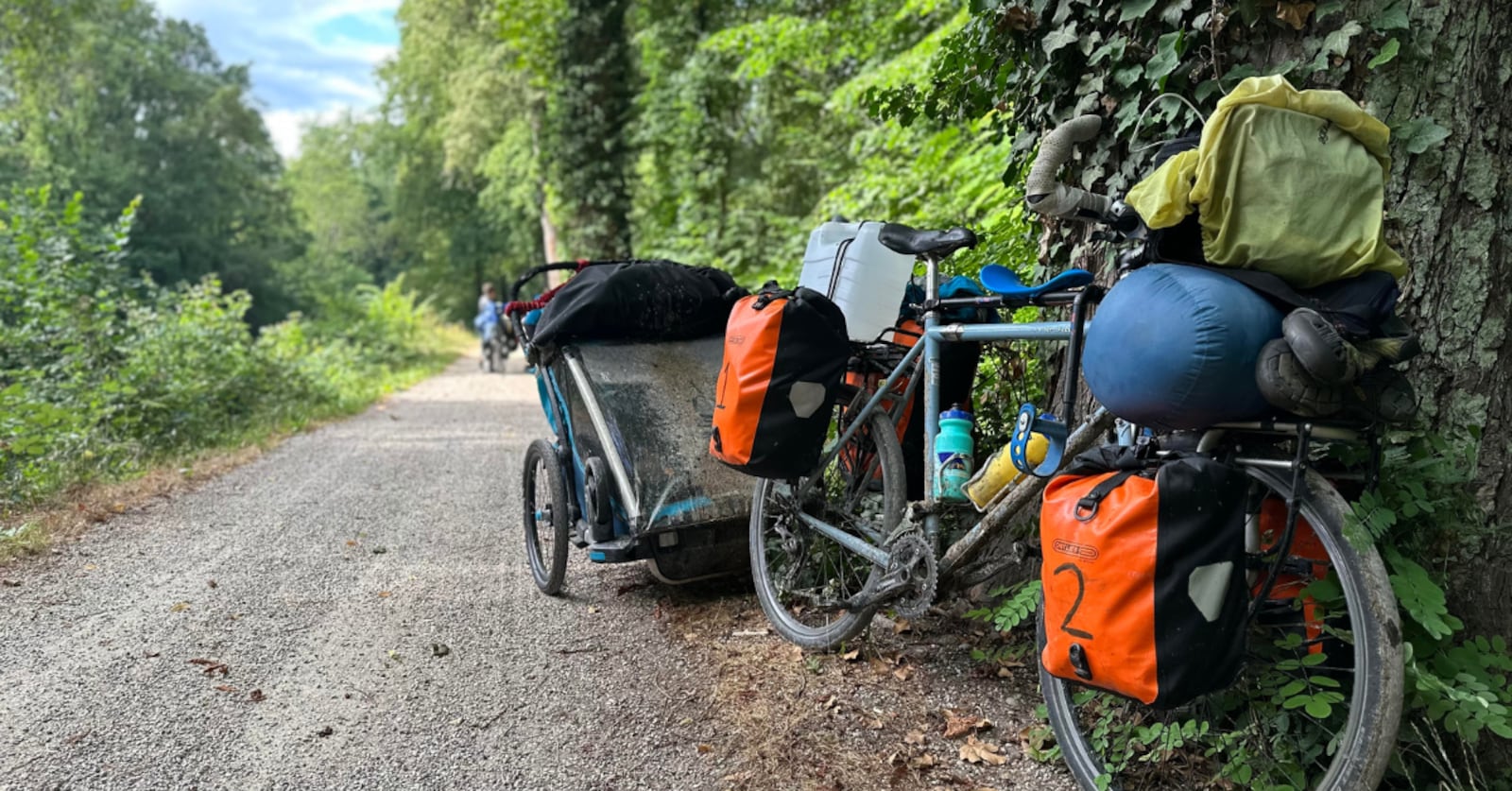Bikewagon was a happy accident. A hobby became a lifestyle, and that lifestyle evolved into a business I began with my father. While I’m happy it happened—and doubly happy we could scale it to $10M in revenue—the lessons I learned are worth more than I can ever earn.
That journey started without my full understanding of what owning a business meant. Eventually, it led me to other businesses altogether: Grand Trunk, Builder Studios and Venture Anyway.
Here’s how that happened.
When I started, I knew no entrepreneurs. My dad was a traveling salesman and went to Idaho once a month to sell conveyor belts. My uncle did sales for HP and owned stocks and a small apartment complex; he was my definition of wealth and success. I didn’t think about it much, but I figured I’d be a traveling salesman, too.
Life after high school held no high expectations. I opted to ride my bike from Santa Barbara with my friends instead of taking the ACT. Community college was where I was bound, and I felt fine with it.
Pedal to the metal
My story starts at the NPS Store, where they sell discounted groceries and salvaged freight. Anything lost in the mail could potentially end up on NPS shelves.
Bicycles fascinated me. When I was 14, I stripped a bike down and partially rebuilt it; in fact, I nearly hit a car on my way to the bike shop riding with faulty brakes. Two years later, I built a bike from scratch and became familiar with many components and how much they cost.
Whenever I visited NPS, I’d see bike parts priced much lower than I’d seen online. The more I shopped there, the more I recognized the regulars. Rumor had it that one guy was even making $20,000 a month buying there and selling elsewhere. I decided I’d try my hand at it, buying parts and selling them on MTBR, the leading bike forum of the day. I opened a bank account at the local credit union, and with my $500 overdraft, I was off to the races.
I’d either drive my 1989 Ford Festiva or ride my bike with its attached cargo trailer to the NPS store near the airport, getting there an hour early so I could be first in line. I’d duck under the roll-up door as they opened to try and beat everyone else to the counter.
This continued through my junior and senior years of high school. I slowly saved enough cash and inventory to pay for my church service mission to Porto, Portugal. My father helped me take photos of all I’d collected, and eventually, we moved our sales from MTBR to eBay. We had a great time working together.
After my mission, I picked up where we’d left off two years later and began selling again. I had a short stint in multi-level marketing (MLM) at NuSkin but kept the online business going to pay for school. Earning $80 a month at NuSkin didn’t exactly cut it!
That led to an idea. I’d always wanted to ride my bike across the country, so my friends and I decided to take a beautiful shortcut, riding from Canada to Mexico along the Pacific Coast Highway. The plan had been to double down in the MLM once I returned, but, coming back from our six-week ride, I had an epiphany.
It was time to go all-in on the bike business. After speaking with my dad, we both decided to make it happen. Once he started earning $3,000 a month (allowing him to quit his job), we became 50/50 partners at Bikewagon. I was sleeping in the basement, making $1,500 a month.
Those figures catapulted quickly. In our first year, we grew to $250,000 in revenue, then $550,000, then $980,000, then $1.4M. We continued our growth to $10M in revenue by 2016. Bikewagon grew from a card table in my basement and was relocated to our garage. Next came multiple warehouses ranging from 1,500 to 3,000, 8,000 and finally 25,000 square feet.
In 2016, we sold Bikewagon to Level Nine Sports.

Shifting gears
Shortly after starting our business, one of my good friends from NPS told me about a bike swap in Denver. “You can buy things from other vendors, then sell them at our booth at higher prices,” he said. That’s all I needed to know. My younger brother and I joined him at the show, riding in the back of his van to our first bike swap.
Right away, I realized there was no way I would sell anything there, though, as people would pay way more for what I was collecting on eBay. I dropped $3,000 on parts, made plans to sell them online, and knew right away I’d never sell at a bike swap again. Instead, I’d buy a vendor booth, get there before the public, and do all the buying before they ever came in.
There were bike swaps in San Francisco, Tucson, New York and Chicago. I was living my dream: “traveling for business,” driving or flying out, then hauling bike parts back.
At one point, we even bought truckloads of returned products from Overstock.com (now Beyond) and learned how to list parts online quickly. The business fizzled, but it helped us figure out how to list in bulk and later allowed us to list everything from our suppliers on eBay. In two years, it was a several-million-dollar part of our business.
When I say “we,” I’m including my father, George, several aunts and an uncle, past church mission companions, siblings and neighborhood friends. At one point, we had 28 employees. The experiences I had and the relationships I made during that time are some of the best of my entire life.
While we had no plans to sell the company, my philosophy was to operate it in a way that would remain attractive to would-be buyers. After several conversations with a potential suitor, things clicked; my dad and I felt it was a good time to move on. Amazon was becoming more of a competitor and shrinking margins, and our need for capital was insatiable. With that, we sold the business.
Riding into new ventures
It was a hard transition. I remember waking up late one morning a few weeks later. My wife curiously asked me, “Why are you still in bed?” I didn’t know. For my whole life, I was a 5 or 6 a.m. guy.
I decided what it was, though: I didn’t have a thing anymore. Without Bikewagon, I wasn’t as stressed, but I no longer had something I could constantly work on in my mind. It took a lot of time to decide what I wanted to focus on next. Building and remaining engaged were what fueled me—it’s how I’m wired. Not having anything, though? That wasn’t good for me. I needed a new problem to solve.
I started formulating my next step. I didn’t exactly know what to do, so I started falling into consulting engagements to see if that was a right fit. My wife and I took our three kids on a 2.5-month bike ride across France and Germany that summer. After we returned, one of my consulting clients invited me to be their executive coach, which led to a year of working with their executive team. Just like that, I fell in love with coaching. Talking to people about personal vision, direction, goal setting and establishing systems is what I really love to do. It meant meeting many intelligent, sharp people who didn’t have lives they loved. I decided I could help them establish systems that would allow them more of what they wanted in life. This led me to start Venture Anyway.
Today, I run a four-month mastermind group where we talk about all kinds of better business principles over nine 90-minute calls. I’m just closing up my 15th group doing exactly that.
I also had the opportunity with a few partners to buy an outdoor travel company called Grand Trunk. I’d always said I wanted to own a family travel company and had even been developing a few products on the side before this opportunity came up. It’s funny how things work out.
My professional strategy is to get clear about what I love doing and what skills I have, then find businesses that allow me to exercise those skills. Because I love traveling with my family, I’ve maintained the flexibility to allow occasional trips with them.
Venture Anyway aligns well with Builder Studios, a coworking space for entrepreneurs I’m also heavily involved in. I love that I get to do this professionally. Grand Trunk lets me stay involved in the outdoor industry and develop my sales skills. After a few years and a lot of effort, it’s nice to see that my businesses have begun to sprout. It took long enough!
The slow road
We often want immediate results. Bill Gates is credited with saying, “Most people overestimate what they can do in one year and underestimate what they can do in 10 years.”
We don’t have to change the world today. Urgency is valuable, but a lot of good can result from remaining steady over time. Consistent focus makes a big difference. Many will try to go from 0 to 100 overnight and fall back to 0 instead of going from 0 to 5, then 5 to 10, and so on. It’s not aligned with the law of the harvest and how nature works.
You get better by solving problems and using your energy to figure things out. That’s the action, and money is the result. Energy today doesn’t mean money today, but energy, money and focus over time, if placed well, should lead to those results.
If you have a small sapling, you give it a little water. Have a tree? Give it a lot of water. Whether it’s cutting out added sugars, learning a language or building a business, life is a long and steady approach.


